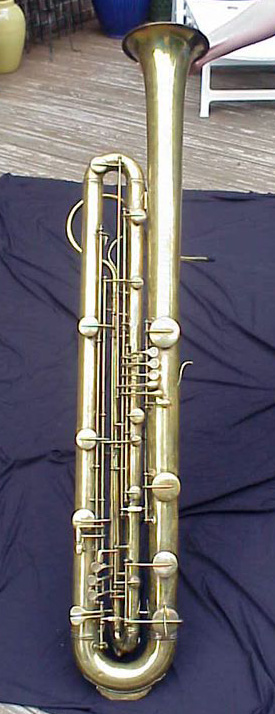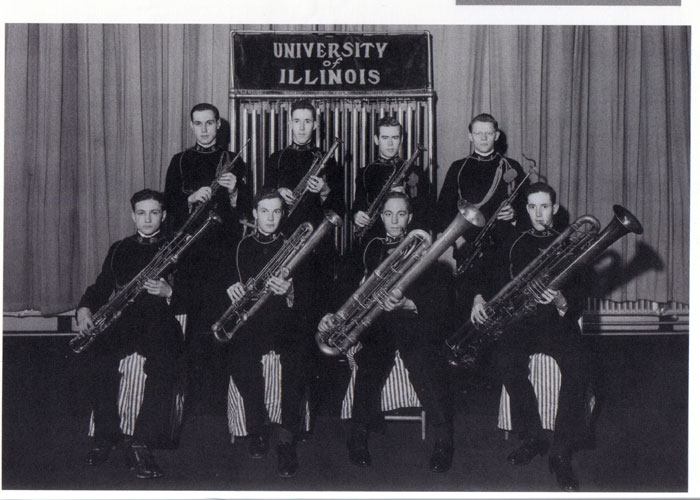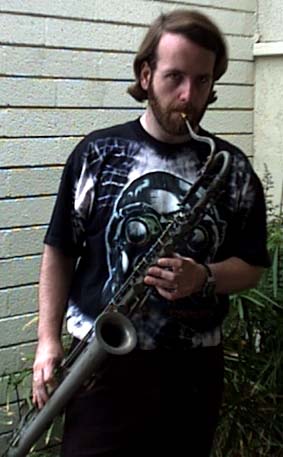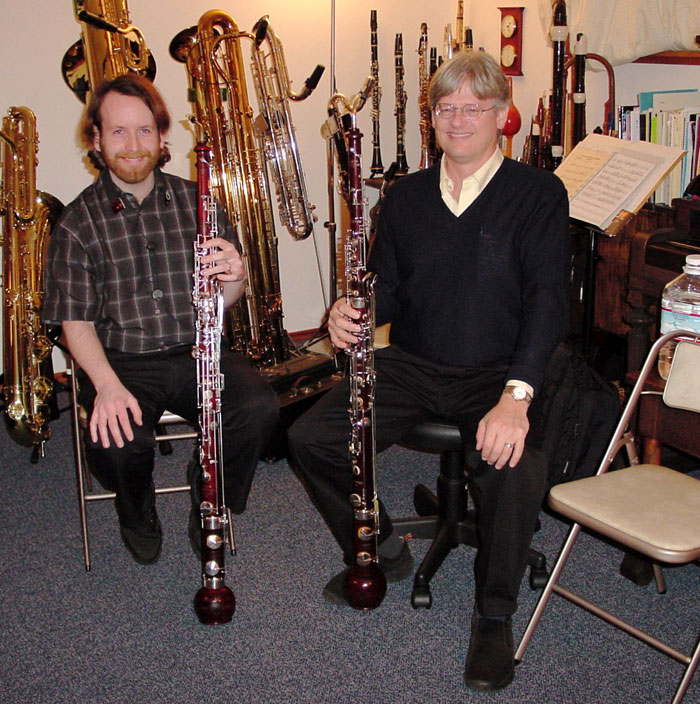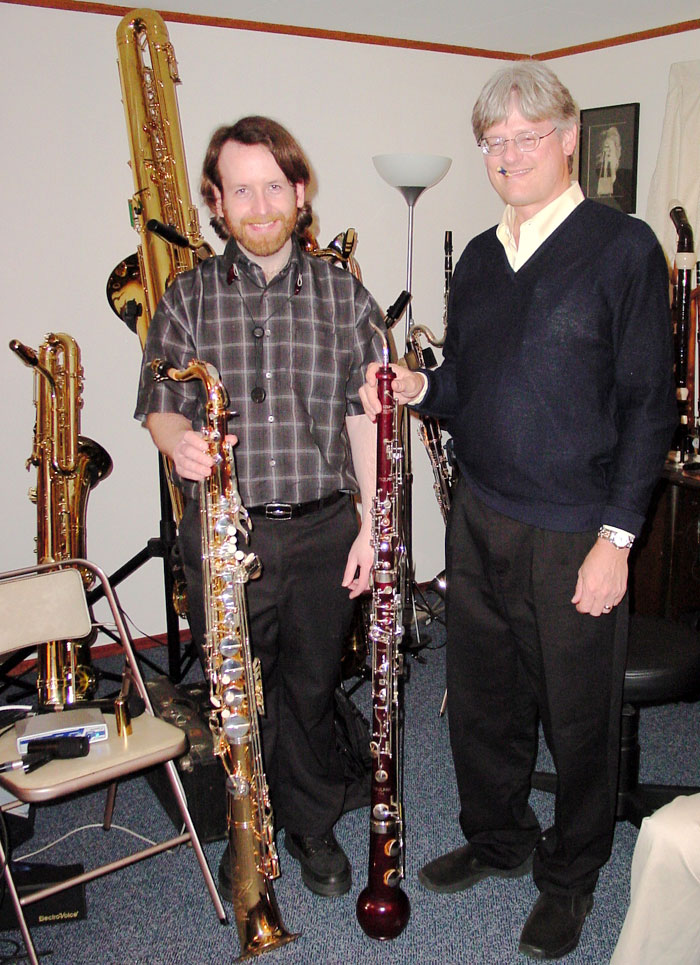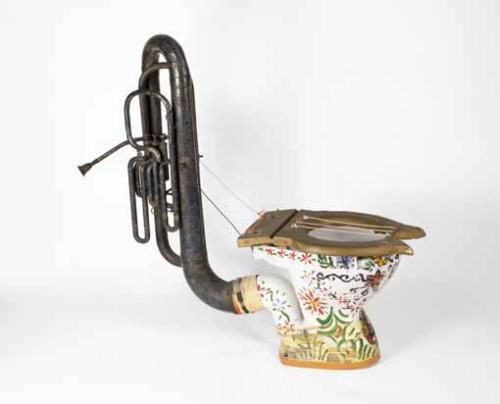Above: An Eb contrabass sarrusophone. The sarrusophone is essentially a metal bassoon, the design of which borrowed heavily from saxophone design. Like the saxophone, sarrusophones came in sizes from sopranino through contrabass, but only the contrabass became popular. They are still made in Italy, and although they have been considered obsolete for 80 years or so, they are having a bit of a revival. Below is the University of Illinois band's sarrusophone section from 1942. Included are soprano, alto, tenor, baritone, bass, and contrbass sarrusophones.
A
baritone Rothphone in Eb, borrowed from Rich Keillis.
Above: Jay and his friend Grant Green, founder of Contrabass.com. Grant is the proud owner of one of about 100 heckelphones in the world, and Jay is holding one that belongs to Petur Hurd. The heckelphone is an absolutely magnificent instrument- it is a type of large-bore bass oboe with a range to low A and an incredibly rich and profoundly resonant sound. Below is a comparison of a heckelphone and a straight Bb tenor saxophone.
Perhaps
you're familiar with the euphonium? And everyone is familiar with
the loo... All material © Jay Easton 2001-2006 unless otherwise noted
|


